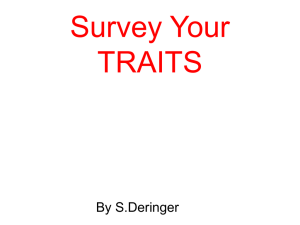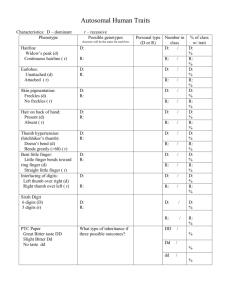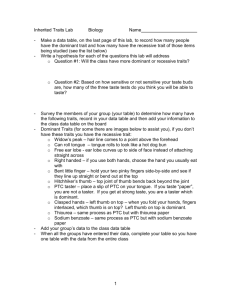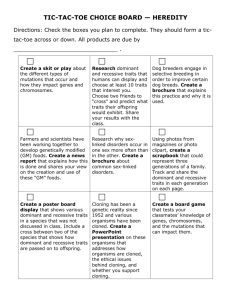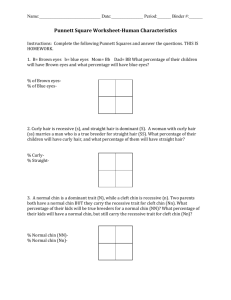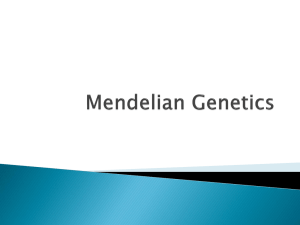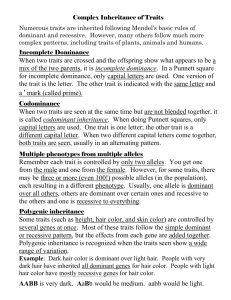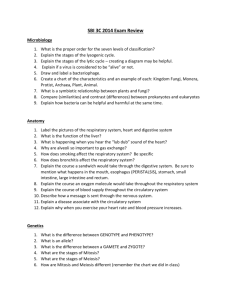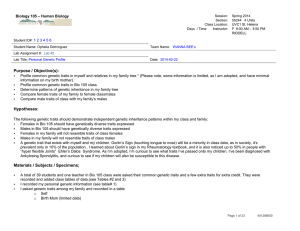Human Heredity Lab - NAAE Communities of Practice
advertisement
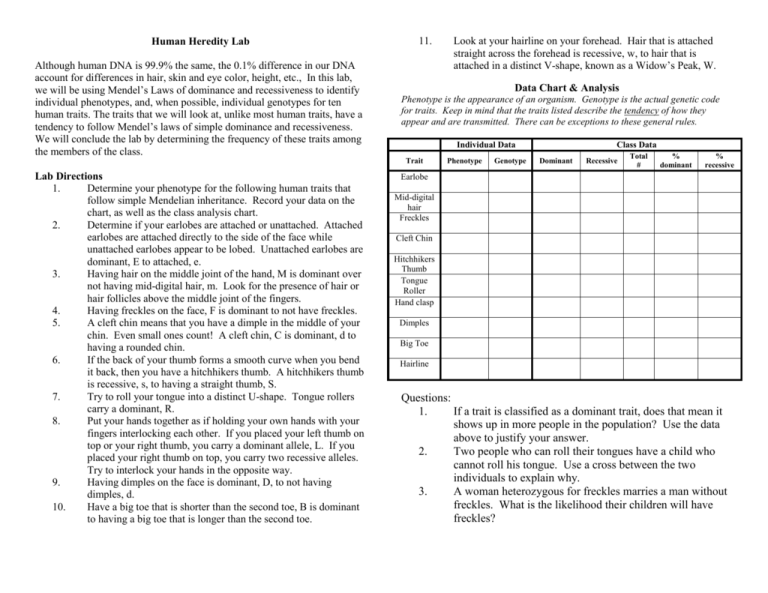
Human Heredity Lab Although human DNA is 99.9% the same, the 0.1% difference in our DNA account for differences in hair, skin and eye color, height, etc., In this lab, we will be using Mendel’s Laws of dominance and recessiveness to identify individual phenotypes, and, when possible, individual genotypes for ten human traits. The traits that we will look at, unlike most human traits, have a tendency to follow Mendel’s laws of simple dominance and recessiveness. We will conclude the lab by determining the frequency of these traits among the members of the class. 11. Data Chart & Analysis Phenotype is the appearance of an organism. Genotype is the actual genetic code for traits. Keep in mind that the traits listed describe the tendency of how they appear and are transmitted. There can be exceptions to these general rules. Individual Data Trait Lab Directions 1. Determine your phenotype for the following human traits that follow simple Mendelian inheritance. Record your data on the chart, as well as the class analysis chart. 2. Determine if your earlobes are attached or unattached. Attached earlobes are attached directly to the side of the face while unattached earlobes appear to be lobed. Unattached earlobes are dominant, E to attached, e. 3. Having hair on the middle joint of the hand, M is dominant over not having mid-digital hair, m. Look for the presence of hair or hair follicles above the middle joint of the fingers. 4. Having freckles on the face, F is dominant to not have freckles. 5. A cleft chin means that you have a dimple in the middle of your chin. Even small ones count! A cleft chin, C is dominant, d to having a rounded chin. 6. If the back of your thumb forms a smooth curve when you bend it back, then you have a hitchhikers thumb. A hitchhikers thumb is recessive, s, to having a straight thumb, S. 7. Try to roll your tongue into a distinct U-shape. Tongue rollers carry a dominant, R. 8. Put your hands together as if holding your own hands with your fingers interlocking each other. If you placed your left thumb on top or your right thumb, you carry a dominant allele, L. If you placed your right thumb on top, you carry two recessive alleles. Try to interlock your hands in the opposite way. 9. Having dimples on the face is dominant, D, to not having dimples, d. 10. Have a big toe that is shorter than the second toe, B is dominant to having a big toe that is longer than the second toe. Look at your hairline on your forehead. Hair that is attached straight across the forehead is recessive, w, to hair that is attached in a distinct V-shape, known as a Widow’s Peak, W. Phenotype Genotype Class Data Dominant Recessive Total # % dominant % recessive Earlobe Mid-digital hair Freckles Cleft Chin Hitchhikers Thumb Tongue Roller Hand clasp Dimples Big Toe Hairline Questions: 1. If a trait is classified as a dominant trait, does that mean it shows up in more people in the population? Use the data above to justify your answer. 2. Two people who can roll their tongues have a child who cannot roll his tongue. Use a cross between the two individuals to explain why. 3. A woman heterozygous for freckles marries a man without freckles. What is the likelihood their children will have freckles?
